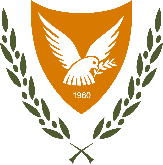Στοιχεία MARC
| 000 -LEADER |
|---|
| fixed length control field |
03793cam a2200277 i 4500 |
| 003 - CONTROL NUMBER IDENTIFIER |
|---|
| control field |
CY-NiCPA |
| 005 - DATE AND TIME OF LATEST TRANSACTION |
|---|
| control field |
20230606115009.0 |
| 007 - PHYSICAL DESCRIPTION FIXED FIELD--GENERAL INFORMATION |
|---|
| fixed length control field |
ta |
| 008 - FIXED-LENGTH DATA ELEMENTS--GENERAL INFORMATION |
|---|
| fixed length control field |
200123s2020 nyufd ob 001 0 eng |
| 020 ## - INTERNATIONAL STANDARD BOOK NUMBER |
|---|
| Canceled/invalid ISBN |
9781032237466 |
| Qualifying information |
(pbk.) |
| 040 ## - CATALOGING SOURCE |
|---|
| Original cataloging agency |
DLC |
| Language of cataloging |
eng |
| Transcribing agency |
CY-NiCPA |
| Modifying agency |
CY-NiCPA |
| Description conventions |
AACR2 |
| 041 0# - LANGUAGE CODE |
|---|
| Language code of text/sound track or separate title |
eng |
| 082 7# - DEWEY DECIMAL CLASSIFICATION NUMBER |
|---|
| Classification number |
658.301 |
| Edition number |
23 |
| 100 1# - MAIN ENTRY--PERSONAL NAME |
|---|
| Personal name |
Das Gupta, Ananda, |
| Dates associated with a name |
1955- |
| Relator code |
Author |
| 9 (RLIN) |
171052 |
| 245 10 - TITLE STATEMENT |
|---|
| Title |
Strategic human resource management : |
| Remainder of title |
formulating and implementing HR strategies for a competitive advantage / |
| Statement of responsibility, etc. |
Ananda Das Gupta. |
| 260 ## - PUBLICATION, DISTRIBUTION, ETC. |
|---|
| Place of publication, distribution, etc. |
New York : |
| Name of publisher, distributor, etc. |
Routledge, |
| Date of publication, distribution, etc. |
2020. |
| 300 ## - PHYSICAL DESCRIPTION |
|---|
| Extent |
xii, 172 p. : |
| Other physical details |
tables, diagrammes ; |
| Dimensions |
24 cm. |
| 504 ## - BIBLIOGRAPHY, ETC. NOTE |
|---|
| Bibliography, etc. note |
Includes bibliographical references and index. |
| 520 ## - SUMMARY, ETC. |
|---|
| Summary, etc. |
"Human resources strategic management concept has developed widely in the last couple of years, especially because of the impact that human resources have over the competitiveness of organizations. The development of human resources strategies involves taking into account their multiple mutual dependences and the fact that they must be vertically integrated with the business strategy. These strategies define intentions and plans related to overall organizational considerations, such as organizational competitiveness, effectiveness or image, and to more specific aspects of human resources management, such as resourcing, motivating, valuating, learning and development, reward and employee relations. Human resources strategic management supplies a large perspective on the way critical issues or success factors related to people can be addressed and different concepts of strategic decisions are made, with long-term impact on the behavior and success of the organization. The fundamental objective of human resource strategic management is to generate strategic capability by ensuring that the organization has the high-qualified, committed and well-motivated employees it needs to achieve and sustain competitive advantage. The emergence of strategic human resource management (SHRM) is influenced by the global competition, and the corresponding search for sources of sustainable competitive advantage. SHRM has achieved its prominence because it provides a means by which business firms can enhance the competitiveness and promote managerial efficiency. It facilitates the development of a human capital that meets the requirements of business competitive strategy, so that organizational goals and mission will be achieved. HRM system is defined as "a set of distinct but interrelated activities, functions and processes that are directed at attracting, developing, and maintaining (or disposing of) a firm's human resources." Many agree that HRM is the most effective tool which contribute to the creation of human capital, and in turn, contributes to organizational performance and competitive advantage. This book provides the emphasis on understanding HRM as the management of work and people in organizations and the analytical approach we take to this means that the boundaries between HRM, industrial/employment relations and organizational behaviour. As a management discipline, HRM draws insights, models, and theories from cognate disciplines and applies them to real world settings. Further, discussions of how current theoretical perspectives and frameworks (e.g., those related to strategic competitiveness, knowledge management, learning organization, communities of practice) can be applied by reflective practitioners to create an eco-friendly organizational culture"-- |
| Assigning source |
Provided by publisher. |
| 650 #0 - SUBJECT ADDED ENTRY--TOPICAL TERM |
|---|
| Topical term or geographic name entry element |
Personnel management |
| 9 (RLIN) |
147445 |
| 650 #0 - SUBJECT ADDED ENTRY--TOPICAL TERM |
|---|
| Topical term or geographic name entry element |
Strategic planning |
| 9 (RLIN) |
40836 |
| 650 #0 - SUBJECT ADDED ENTRY--TOPICAL TERM |
|---|
| Topical term or geographic name entry element |
Organizational effectiveness |
| 9 (RLIN) |
147271 |
| 710 2# - ADDED ENTRY--CORPORATE NAME |
|---|
| Corporate name or jurisdiction name as entry element |
Routledge |
| Relator code |
Publisher |
| 9 (RLIN) |
156201 |
| 942 ## - ADDED ENTRY ELEMENTS (KOHA) |
|---|
| Source of classification or shelving scheme |
Dewey Decimal Classification |
| Koha item type |
Books |
| Classification part |
658.301 DAS |
| 970 ## - Cataloguer name |
|---|
| Cataloguer name |
M. Papamarkou |
